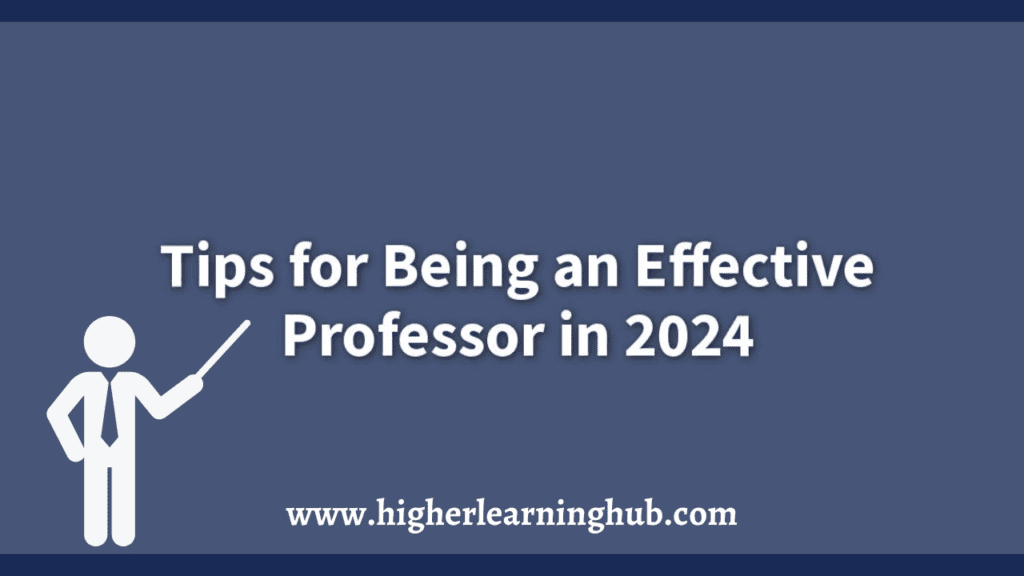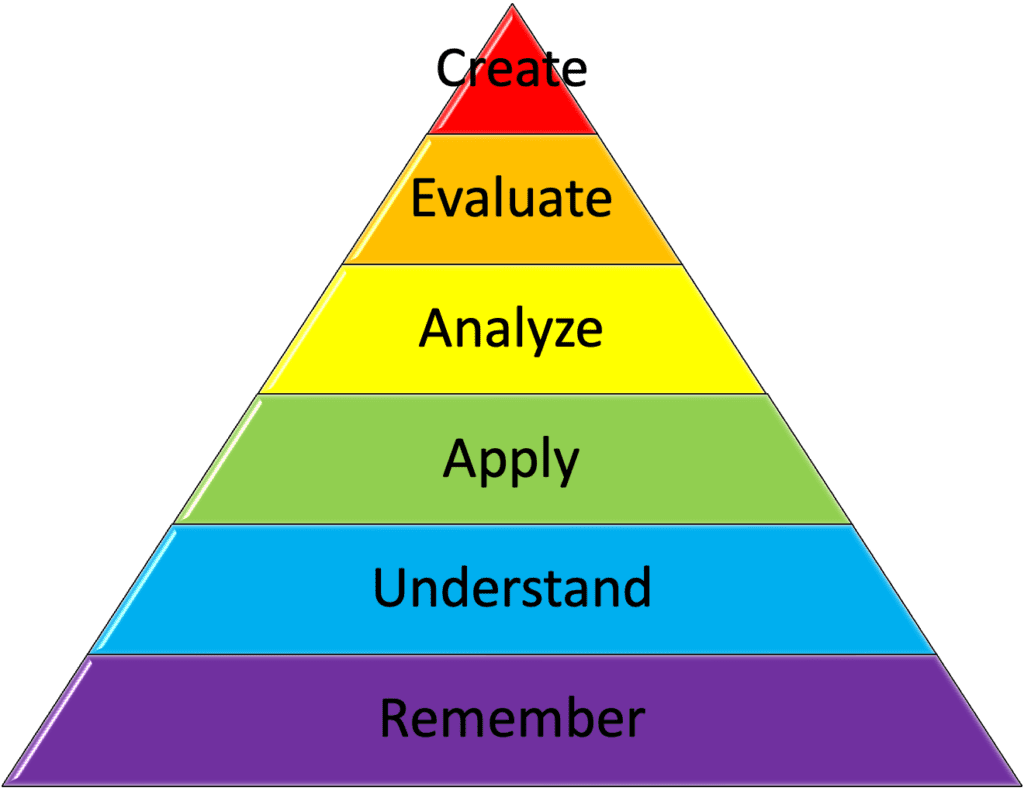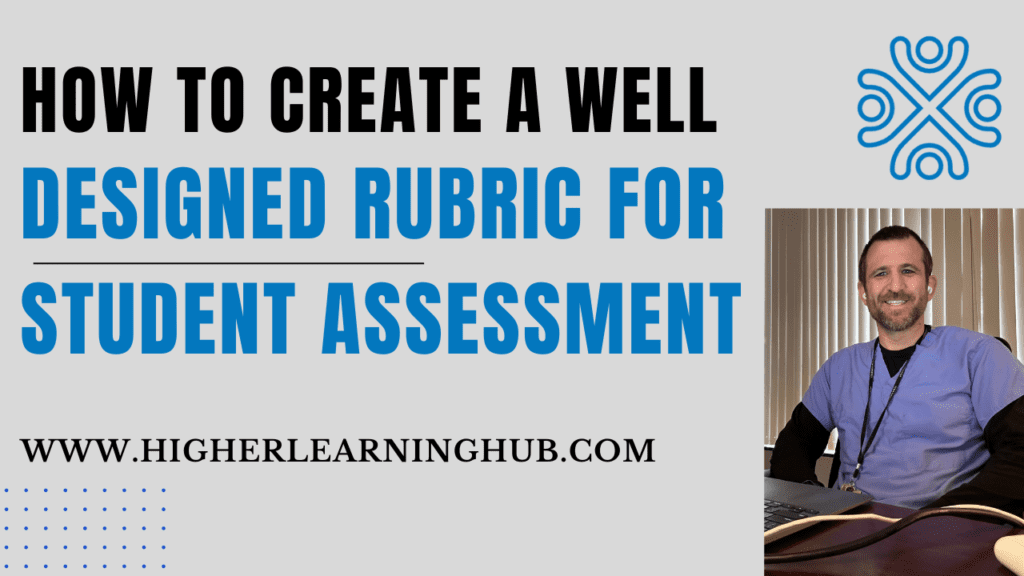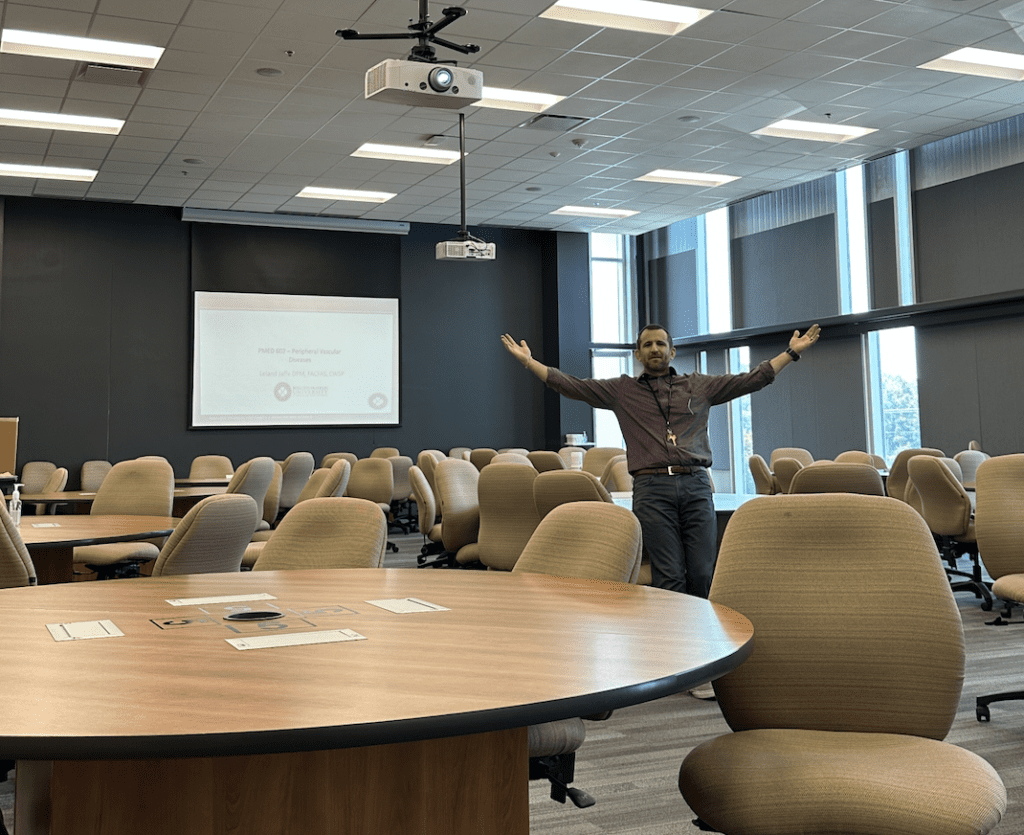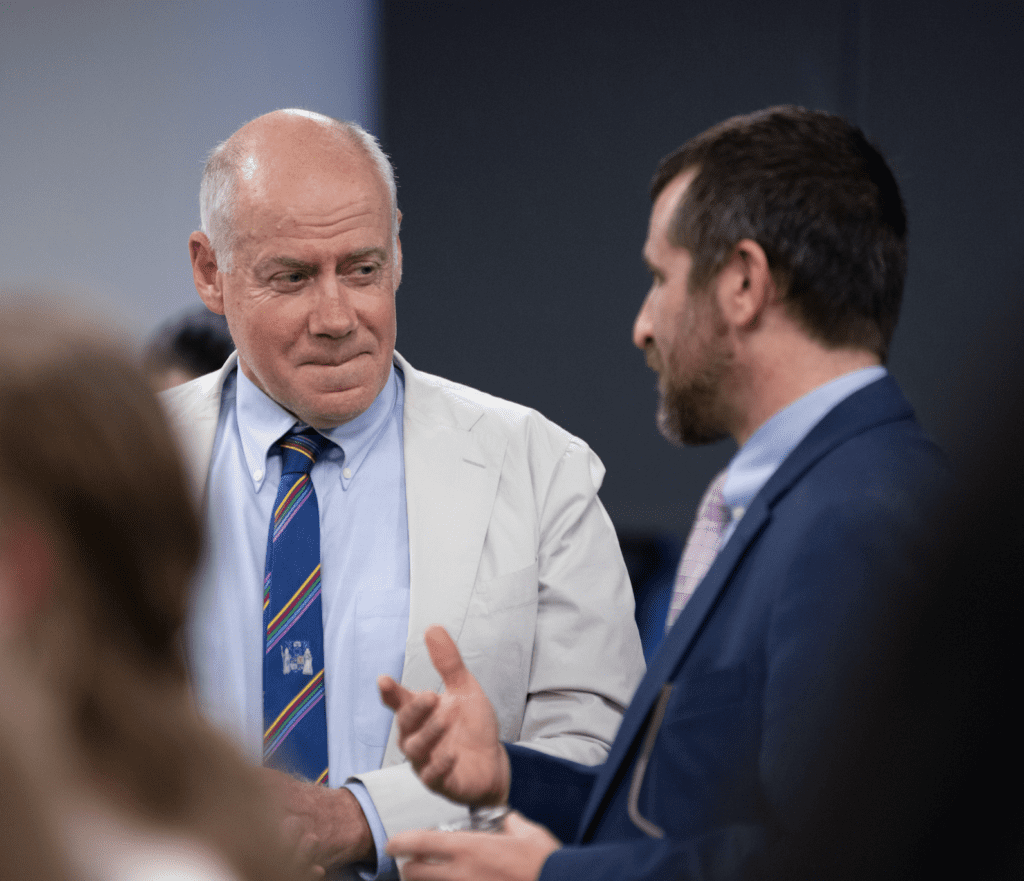Authored by Dr. Leland Jaffe, Associate Dean and Professor; Published 7-16-24
Effective teaching goes beyond the dissemination of knowledge; it shapes the overall academic experience, significantly impacting student success and the institution’s reputation. Professors who excel in their duties not only foster intellectual growth but also inspire and mentor the next generation of thinkers and leaders. In this post, we’ll explore key effective teaching strategies for professors, ensuring you connect with and elevate your students while meeting the evolving demands of academia.
Understanding Your Role as a Professor
In the multifaceted world of academia, the role of a professor extends far beyond the confines of the classroom. As an educator, researcher, mentor, and academic leader, professors play a vital role in shaping the academic landscape and influencing the future of their students and institutions alike.
Teaching and Curriculum Development
Crafting a well-thought-out syllabus and engaging course materials is essential for a professor. A comprehensive syllabus sets the tone for the course, outlining key objectives, assignments, and expectations. Remember that your syllabus is essentially a contract outline your expectations of the students, but also what the students should expect in return. By designing engaging course materials that cater to different learning styles, professors can create an inclusive learning environment that resonates with diverse student needs. This approach fosters student engagement and promotes a deeper understanding of the subject matter.
Student Mentorship and Advising
Guiding students academically and professionally is a fundamental aspect of a professor’s role. Beyond imparting knowledge, professors act as mentors, providing guidance and support to students as they navigate their academic journey. By offering academic advice, career guidance, and opportunities for personal growth, professors play a crucial role in shaping the future success of their students. Don’t underestimate the influence a professor can have on their students. By setting a strong example, you can have a positive impact not just on your students’ academic performance, but on their career trajectory!
Photo by Pixabay

Effective Teaching Strategies
In the realm of higher education, employing effective teaching strategies is paramount to creating a dynamic and engaging learning environment. By utilizing a variety of approaches, professors can cater to diverse learning styles and enhance student comprehension and retention.
Engaging Lecture Techniques
Engaging students during lectures is important for maintaining students’ interest and facilitating effective learning. Incorporating storytelling elements can make complex topics more relatable and memorable. Interactive activities such as small group discussions or interactive quizzes encourage active participation and deepen understanding (see blog post on formative assessment examples). Furthermore, the strategic use of multimedia, including videos, slideshows, and simulations, can provide visual and auditory stimuli to reinforce key concepts.


Photo by Pixabay
Active Learning Approaches
Encouraging active learning through various methods can significantly improve student engagement and critical thinking skills. Group discussions foster collaboration and encourage students to articulate their thoughts and ideas. Implementing problem-based learning challenges students to apply theoretical knowledge to real-world scenarios, fostering practical skills and enhancing problem-solving abilities. Flipped classrooms, where students review materials independently before class and engage in discussions and activities during the session, promote a student-centered approach to learning.
Assessment and Feedback
Assessment plays a important role in gauging student understanding and progress. Integrating both formative assessments, which provide ongoing feedback to guide learning, and summative assessments, which evaluate student mastery of course objectives, helps maintain academic rigor. Providing timely and constructive feedback on assignments and assessments is essential for student growth and improvement. Clear feedback not only highlights areas for enhancement but also motivates students to strive for excellence.
By incorporating these effective teaching strategies, professors can create an inclusive and stimulating learning environment that enhances student success and engagement. Continuously adapting and refining these approaches based on student feedback and outcomes can further elevate the teaching experience and contribute to a positive learning journey for students.
Building Strong Student Relationships
Establishing strong student relationships is a cornerstone of effective teaching, fostering a supportive and inclusive classroom environment where students can thrive. By developing connections with your students, you not only enhance their learning experience but also create a space where they feel valued, seen, and motivated to excel. Let’s explore key strategies to build strong student relationships:
Communication Skills
Effective communication is at the heart of building strong relationships with students. As a professor, clear, empathetic, and respectful communication is essential for creating a supportive learning environment.
-
- Listen Actively: Pay attention to students’ concerns and feedback.
-
- Provide Constructive Feedback: Offer guidance that helps students improve.
-
- Explain Concepts Clearly: Tailor your explanations to cater to different learning styles.
By fostering open communication channels, you encourage students to express their thoughts and questions without hesitation, nurturing a collaborative learning atmosphere.
Office Hours and Accessibility
Being available to students outside of class time is vital for establishing a sense of support and accessibility. Hosting regular office hours allows students to seek clarification, guidance, or feedback on assignments and course materials.
-
- In-Person Meetings: Hold consistent office hours.
-
- Virtual Meetings: Utilize video conferencing tools for remote accessibility.
-
- Email Communication: Be responsive and approachable via email.
By demonstrating your availability and willingness to assist students individually, you signal that their academic success is a priority. Whether through in-person office hours, virtual meetings, or communication via email, being accessible shows students that you are invested in their learning journey and committed to their progress.
Cultural Competence and Inclusivity
In today’s diverse educational landscape, cultural competence and inclusivity are essential aspects of fostering strong student relationships. Acknowledging and respecting the individual backgrounds, experiences, and perspectives of students contributes to a welcoming and inclusive classroom environment.
-
- Embrace Diversity: Incorporate multiple perspectives into your teaching.
-
- Address Implicit Bias: Reflect on and adjust unconscious biases in your interactions.
-
- Create Inclusive Spaces: Actively make room for all voices to be heard.
By actively incorporating inclusive practices and multicultural perspectives into your teaching, you cultivate a learning environment where every student feels valued and respected.
By prioritizing effective communication, accessibility, cultural competence, and inclusivity in your interactions with students, you lay the foundation for meaningful and impactful relationships that enhance the learning experience for all. Building strong student relationships not only fosters academic success but also cultivates a sense of belonging and support within the classroom, empowering students to reach their full potential.
Photo by Tatiana Syrikova

Professional Development and Continuous Improvement
A commitment to professional development and continuous improvement is paramount for educators aiming to excel in their roles. By actively seeking growth and advancement, professors can enhance their teaching practices and stay current with the latest trends in education.
Attending Conferences and Workshops
Engaging in conferences and workshops is a golden opportunity for professors. These academic events allow you to immerse yourself in collaborative learning environments, gaining insights into the latest research and innovative teaching strategies. By participating in such events, you can:
-
- Stay updated with new developments in your field.
-
- Expand your professional network.
-
- Discover effective approaches to enhance student learning outcomes.
These gatherings are not just about absorbing information; they also provide a platform to exchange ideas and forge valuable connections with peers from around the world.


Photo by Pixabay
Peer Collaboration and Networking
Building strong professional relationships through peer collaboration and networking is essential. Working closely with colleagues allows you to share best practices, engage in joint projects, and foster mutual growth. Here are some key benefits:
-
- Leverage Collective Expertise: Gain fresh perspectives and insights from your peers.
-
- Enhance Teaching Quality: By sharing knowledge, you collectively work towards improving the quality of education.
-
- Build a Support System: A strong network of professionals provides support and motivation.
Promoting a collaborative atmosphere within academic circles not only benefits individual growth but also cultivates a culture of continuous improvement.
Reflective Teaching Practice
Reflective teaching practice involves continually assessing your approach and seeking feedback to refine your methods. This practice enables you to:
-
- Evaluate Instructional Approaches: Identify what works and what doesn’t.
-
- Adapt Teaching Strategies: Modify your methods to better meet the diverse needs of your students.
-
- Embrace Continuous Learning: Foster a mindset of self-improvement and lifelong learning.
By incorporating reflective practices, you’ll enhance your teaching effectiveness and ensure your students achieve their highest potential.
For more insights into these strategies, consider exploring these resources:
Embracing professional development and continuous improvement not only propels your career forward but also significantly enriches the learning experience for your students.
Balancing Teaching, Research, and Service
In the multifaceted role of a professor, juggling teaching responsibilities, research endeavors, and service commitments can be a challenging yet essential aspect of academic life. Finding a balance among these demands requires strategic time management techniques and effective collaboration with colleagues and teaching assistants to streamline tasks and maximize productivity.
Time Management Techniques
To navigate the intricate demands of teaching, research, and service, implementing effective time management strategies is crucial. Here are some tips for prioritizing tasks and optimizing your schedule:
-
- Prioritize Tasks: Identify urgent and important responsibilities to allocate time efficiently.
-
- Create a Schedule: Develop a structured timetable that encompasses teaching, research, and service commitments.
-
- Set Realistic Goals: Break down tasks into manageable segments to enhance productivity.
-
- Utilize Technology: Explore tools and apps that aid in organizing tasks and schedules for enhanced efficiency.
By proactively managing your time and establishing clear priorities, you can effectively balance the diverse demands of academia and optimize your productivity.
Delegation and Collaboration
Recognizing the value of collaboration and delegation is key to managing teaching, research, and service obligations effectively. Engaging with teaching assistants, colleagues, and other professionals can lighten your workload and enhance overall efficiency. Here’s how you can leverage delegation and collaboration to streamline tasks:
-
- Engage Teaching Assistants: Delegate certain teaching tasks, grading assignments, or managing course materials to teaching assistants to free up time for research and service commitments.
-
- Collaborate with Colleagues: Work together with peers on research projects, curriculum development, or service initiatives to share responsibilities and benefit from collective expertise.
-
- Establish Clear Communication: Ensure open and transparent communication channels with collaborators to coordinate efforts seamlessly and achieve common goals.
By embracing delegation and fostering collaborative partnerships, professors can work synergistically to meet the diverse demands of the academic landscape and enhance overall effectiveness.
Photo by Christina Morillo
Effective Teaching Strategies for Professors: Conclusion
Being an effective professor in 2024 requires a blend of innovative teaching strategies, strong student relationships, and a commitment to continuous improvement. By focusing on dynamic lecture techniques, active learning approaches, and comprehensive assessments, professors can create engaging and inclusive classroom experiences.
Building meaningful connections with students through open communication, accessibility, and cultural competence fosters a supportive learning environment. Additionally, embracing professional growth through conferences, peer collaboration, and reflective practices ensures that educators stay current and effective.
Balancing teaching, research, and service is essential for academic success. Implementing strategic time management and delegating tasks effectively allows professors to fulfill their responsibilities while maintaining high standards of excellence.
By integrating these practices, professors not only enhance their professional development but also significantly contribute to the academic success and personal growth of their students. Continuously striving for improvement will benefit both educators and institutions, fostering a vibrant and progressive academic community.

